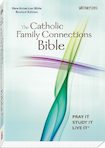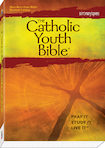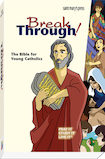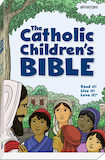Recent headlines
-
AUGUST 19, 2020
Saint Mary’s Press Pioneers Brand New Distance-Learning Options for Flexible Learning During COVID-19 Pandemic
-
APRIL 11, 2019
Saint Mary’s Press and the California Catholic Conference launch new eLearning program celebrating California Native Peoples and Missions
-
MARCH 20, 2019
Mission: Building Solidarity Across Differences
-
JANUARY 29, 2019
Singer-Towns Takes On New Role After Storied Career at Saint Mary’s Press
-
JANUARY 9, 2019
OPEN WIDE OUR HEARTS
-
JULY 12, 2018
ACTA Publications and Saint Mary’s Press Conclude Historic Sale
-
JUNE 29, 2018
Janet Zafft: A celebration of 40 years of faithful, joyful service
-
JANUARY 17, 2018
FOR IMMEDIATE RELEASE: SAINT MARY’S PRESS & GEORGETOWN RESEARCHERS RELEASE TWO-YEAR NATIONAL STUDY ON DISAFFILIATION IN YOUNG CATHOLICS
-
JANUARY 15, 2018
RELEASE: SAINT MARY’S PRESS RELEASES NEW CATHOLIC YOUTH BIBLE DESIGNED TO INSPIRE AND ENGAGE
-
JANUARY 5, 2018
RELEASE: SAINT MARY’S PRESS HOSTS A PUBLIC DISCUSSION ON WHY YOUTH ARE LEAVING RELIGION
-
SEPTEMBER 19, 2017
"A better children's bible" from Aleteia: a review of The Catholic Children's Bible
-
JULY 3, 2017
Making a difference in Ethiopia
-
AUGUST 10, 2015
Ready-To-Go Game Shows
-
JULY 8, 2015
Coming Soon! A New Translation of The Catholic Youth Bible
-
MAY 8, 2015
New type of Bible with African-American history
-
MAY 3, 2015
World Religions: A Voyage of Discovery
-
APRIL 21, 2015
Religion teacher wants students to open Bible, be surprised
-
APRIL 14, 2015
The Catholic Children's Prayer Book
-
MARCH 26, 2015
New Edition of Bible Considers African-American Catholic Faith, Youth and Community
-
JANUARY 9, 2015
New Bible is Designed Specifically for Young Black Catholics
-
DECEMBER 29, 2014
One of Us
-
DECEMBER 19, 2014
Cotter student receives free prayer book from Saint Mary's Press
-
NOVEMBER 24, 2014
Bible aims to make God's word more accessible to African-American youth
-
OCTOBER 7, 2014
Bible for African-American youth to be released
-
MAY 28, 2014
Saint Mary's Press Named Gold Winner for Benjamin Franklin Award
-
APRIL 26, 2014
Essential Guide to Biblical Life and Times
-
APRIL 21, 2014
Anselm Academic Study Bible
-
APRIL 12, 2014
The Catholic Youth Bible
-
APRIL 8, 2014
Break Through!
-
MARCH 31, 2014
Moses and the Ten Commandments Big Book
-
MARCH 30, 2014
The Catholic Children’s Bible
-
MARCH 24, 2014
Vocations: Answering God's Call
-
FEBRUARY 5, 2014
Excellent Textbook on Morality For Kids
-
JANUARY 30, 2014
Church History: Apostolic Times to Today
-
DECEMBER 13, 2013
The Catholic Children’s Bible
-
NOVEMBER 24, 2013
Catholic TV interviews John Vitek on The Catholic Children's Bible
-
AUGUST 25, 2013
Back-to-School Time Is Good Reading Time-Review by National Catholic Register
-
AUGUST 21, 2013
The Catholic Children's Bible by Saint Mary's Press-Review by Equipping Catholic Families
-
JULY 27, 2013
"Great Addition to The Catholic Children's Bible" by Stuart Dunn
-
JULY 12, 2013
The Catholic Children’s Bible by Saint Mary's Press -Review by Gidget Bookworms
-
JUNE 18, 2013
The Catholic Youth Bible® New Revised Standard Version: Catholic Edition, Not just for Roman Catholics!
-
MAY 26, 2013
The Catholic Children’s Bible
-
MAY 26, 2013
The Catholic Children's Bible Review
-
MAY 19, 2013
Liturgical Press, Loyola Press, Saint Mary's Press Dominate 2013 "Excellence in Publishing Awards"
-
MAY 19, 2013
Saint Mary's Press: The Catholic Children's Bible
-
MAY 5, 2013
Saint Mary's Press partners with Kno to Offer the World's Best-Selling Catholic Youth Bibles as Interactive E-Books
-
APRIL 1, 2013
First Dog, Midwest Book Review
-
OCTOBER 24, 2012
Made in Winona: Saint Mary's Press
-
OCTOBER 1, 2012
Reviews of Who Is Jesus Christ?
-
SEPTEMBER 28, 2012
The Catholic Youth Bible® Dancing at LARE!
-
AUGUST 22, 2012
Breakthrough! The Bible for Young Catholics
-
AUGUST 16, 2012
Who is Jesus Christ?
-
JULY 16, 2012
Sister Michaela Hedican Elected 16th Prioress of Sisters of the Order of Saint Benedict in St. Joseph, MN
-
JUNE 6, 2012
Breakthrough! The Bible for Young Catholics
-
APRIL 16, 2012
Great People of the Bible
-
JULY 1, 2011
Great People of the Bible Student Book
-
FEBRUARY 1, 2011
Sister Michaela Hedican Elected 16th Prioress of Sisters of the Order of Saint Benedict in St. Joseph, MN
-
JANUARY 26, 2011
Saint Mary's Press Releases High School Textbooks Found in Conformity with the Catechism
-
JANUARY 26, 2011
Saint Mary's Press Releases High School Textbooks Found in Conformity with the Catechism
-
JANUARY 1, 2011
Saint Mary's Press Releases Framework High School Textbooks Declared in Conformity with the Catechism
-
DECEMBER 17, 2010
Jesus in the Gospels and Acts: Introducing the New Testament
-
DECEMBER 17, 2010
The Catholic Church: A Brief Popular History
-
DECEMBER 17, 2010
Using the Remote to Channel Jesus: 50 Movie Clips for Ministry
-
NOVEMBER 1, 2010
Brian Singer-Towns Receives Youth Ministry Award
-
NOVEMBER 1, 2010
Saint Mary's Press Announces Partnership with Catholicquiz.com
-
OCTOBER 31, 2010
Interview with John Vitek
-
JUNE 1, 2010
The Catholic Family Connections Bible
-
JUNE 1, 2010
Reviews of Saint Mary's Press® Essential Guide to Biblical Life and Times
-
MARCH 1, 2010
Using the Remote to Channel Jesus: 50 Movie clips for Ministry
-
DECEMBER 1, 2009
World Religions: A Voyage of Discovery, Third Edition
Press Room
April 21, 2014
Anselm Academic Study Bible
by Mary Harwell Sayler with Bible Reviewer
Before presenting the full text and footnotes to the New American Bible Revised Edition (NABRE), the Anselm Academic Study Bible provides a series of articles such as “The Formation of the Bible,” “Geography, Archaeology, and the Scriptures,” “Social Context of the Bible,” and “The Distinctiveness of Jesus,” where each article (and more!) contain highly interesting and helpful information.
For example, the article on geography lets us know the “territory controlled by the ancient Israelite kingdoms was relatively small – about the size of New Jersey.” And, in “Social Context,” we realize that “All of the cultures of the ancient Near East, along with Greek and Roman cultures, were honor cultures” where that status could “be earned or achieved,” which explains why King Saul, who had been victorious over thousands, became paranoid over David, who was honored for conquering “tens of thousands.”
In “The Formation of the Bible,” we discover that the Septuagint or Greek Bible was widely read during Jesus’ time and, therefore, provided over 90 percent of the Old Testament verses quoted in the New Testament. Although Catholic Bibles follow that translation, others do not, making the Apocrypha a source of confusion among various denominations. However, the article on “Deuterocanonical and Noncanonical Scriptures” not only explains this well but mentions various books written during Bible times that were not canonized but became a source of folktales and thought-provoking information not found in scripture.
Equally interesting, the article on “Jewish Biblical Interpretation” gives insight into common methods of study, biblical analysis, and interpretative thinking such as allegory, numeric value, and typology where something on earth represents a type of reality found in heaven. In addition, “Jewish and non-Jewish interpreters familiar with earlier Jewish commentary draw on rabbinic/ midrashic interpretation, with its attention to multiple meanings, plays on words, and intertextual conversations, to enhance literary-critical approaches.”
Understanding Jesus’ Jewish heritage helps us to recognize “The Many Faces of Jesus” as seen by early Christians and Gospel writers who “came to understand the person and mission of Jesus as the new Adam, the new Son of David, the new Passover, and the New Covenant that the Hebrew Scriptures foretold.” With this foundation, we’re better equipped to approach “A Brief History and Practice of Biblical Criticism” with its methods of studying the Bible through history, textual comparisons, translations, forms, sources, intent, and/or unifying themes.
As the article on “Contextual and Transformative Interpretation” explains, “different types of meaning within biblical texts” might focus on “The messianic meaning,” “The canonical meaning,” or “The communal meaning," but “One can read the Bible primarily for information, that is, to be intellectually enlightened, or for transformation, that is, to be personally changed.” Regarding the latter, “This integration of the meaning of the text and the world of the reader is the ultimate goal of interpretation.” With “meditative prayer or communal worship, the biblical texts become more personal and immediate,” for example, through Lectio Divina.
A subheading on “The Tradition of Lectio Divina” offers these bullet points for us to consider and live out:
- Lectio – Reading the Text with a Listening Ear
- Meditatio – Reflecting on the Meaning and Message of the Text
- Oratio – Praying in Response to Scripture
- Contemplatio – Quietly Resting in God
- Operatio – Faithful witness in Daily Life

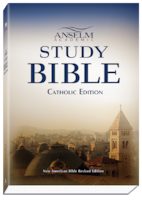
 Print page
Print page Share
Share
